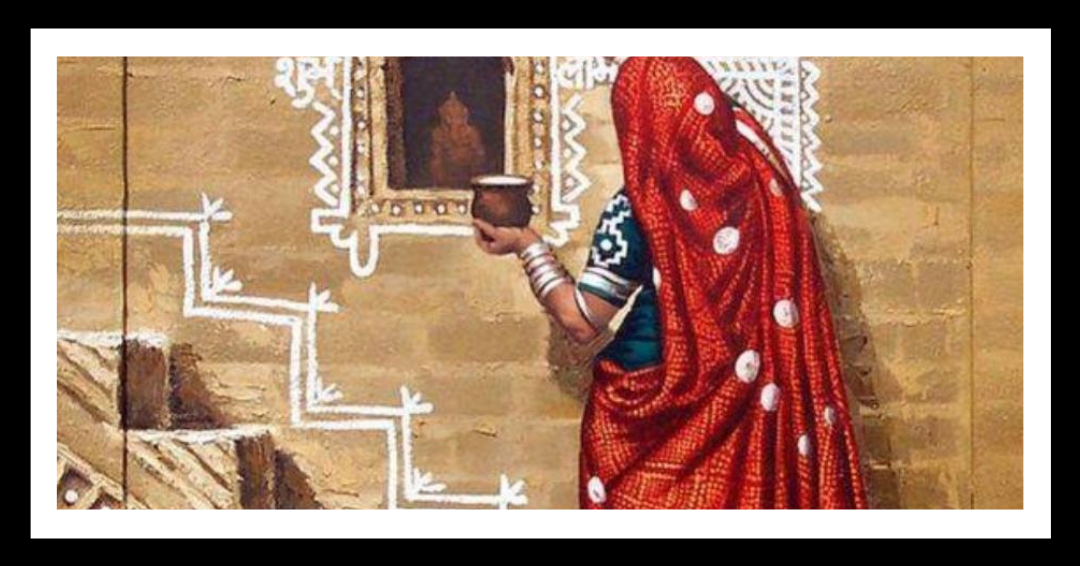 3rd February 2025
3rd February 2025
When you think of Rajasthan, the mind often drifts to majestic forts like Amer, Mehrangarh, and Jaisalmer or the beautifully crafted pottery that adorns markets and homes alike. But Rajasthan is far more than these celebrated symbols. It is a land where history, culture, and nature collide to create a living tapestry that mesmerizes all who delve deeper.
Here’s an immersive guide into the facets of Rajasthan that often go unnoticed but are no less remarkable.
Rajasthan’s cuisine is as colorful and diverse as its culture. It’s not just about food; it’s a celebration of flavors and traditions.
Laal Maas: This fiery mutton curry is a signature dish that stands as a testament to the bold palate of the region. Cooked with red Mathania chillies, garlic, and a host of aromatic spices, it’s a must-try for anyone seeking an authentic culinary experience.
Dal Baati Churma: The crown jewel of Rajasthani cuisine. This triad of flavors—crunchy baati (wheat rolls), flavorful dal (lentils), and sweet churma—encapsulates the essence of Rajasthani hospitality. It’s a meal designed to be savored, preferably with lashings of ghee.
Snacks and Street Food: Beyond the main course, the state offers delectable snacks like kachoris stuffed with lentils or onions, spicy mirchi vadas, and ghewar, a decadent sweet made of flour, sugar syrup, and ghee.
Music and dance in Rajasthan are not mere performances; they’re a way of life. Every village, every home, and every festival pulses with rhythm and melody.
Manganiyar and Langa Music: These desert communities have passed down their musical traditions for generations. Using instruments like the kamayacha, dholak, and morchang, they narrate tales of love, valor, and devotion. The soulful, haunting tunes of the Manganiyars are often performed during special occasions, mesmerizing audiences.
Kalbeliya Dance: Performed by the Kalbeliya nomadic tribe, this dance mirrors the graceful movements of a serpent. Dressed in black swirling skirts with mirrorwork and embroidery, the dancers captivate viewers with their hypnotic moves.
Rajasthan’s arid image belies its diverse and breathtaking natural landscapes.
Mount Abu: The only hill station in Rajasthan, Mount Abu offers a respite from the desert heat. Its lush greenery, serene Nakki Lake, and the intricate Dilwara Temples carved from white marble make it a unique gem.
Ranthambore National Park: One of India’s most famous wildlife reserves, Ranthambore is home to the majestic Bengal tiger. The park’s rugged terrain and ancient ruins make it a perfect destination for nature and photography enthusiasts.
Salt Lakes and Wetlands: Did you know Rajasthan is home to Sambhar Salt Lake, India’s largest inland salt lake? It’s also a haven for migratory birds like flamingos and pelicans.
Pottery might be the most recognized craft, but Rajasthan’s artistry extends far beyond.
Pichwai Paintings: These intricate hand-painted artworks, depicting scenes from Lord Krishna’s life, are created using natural colors. Nathdwara, near Udaipur, is the hub for these exquisite creations.
Bandhani Textiles: The ancient tie-and-dye technique produces vibrant patterns that are synonymous with Rajasthan’s cultural attire. Jaipur, Jodhpur, and Sikar are popular centers for Bandhani.
Kundan and Meenakari Jewelry: Rajasthan’s regal history reflects in its dazzling jewelry. Kundan (gem-setting) and Meenakari (enamel work) are techniques perfected by skilled artisans over centuries.
If you truly want to experience the spirit of Rajasthan, plan your visit around its grand festivals.
Pushkar Camel Fair: This iconic event is not just a livestock fair; it’s a riot of colors, culture, and chaos. From camel beauty contests to folk music performances, it’s an experience unlike any other.
Teej Festival: Celebrated during the monsoon season, Teej honors the union of Lord Shiva and Goddess Parvati. Women dress in their finest green outfits, apply henna, and enjoy swings adorned with flowers.
Desert Festival, Jaisalmer: Held in the golden sands of the Thar Desert, this festival showcases the best of Rajasthan’s culture with camel races, turban-tying competitions, and stunning sunset performances.
Rajasthan’s spiritual essence is as diverse as its culture.
Dilwara Temples: Nestled in Mount Abu, these Jain temples are a marvel of intricate marble work. Every pillar, arch, and ceiling is a testament to the devotion and skill of its creators.
Ajmer Sharif Dargah: A site of deep reverence, this Sufi shrine draws devotees from across religions, seeking blessings and solace.
Brahma Temple, Pushkar: The only temple in the world dedicated to Lord Brahma, this temple stands by the holy Pushkar Lake, a site of pilgrimage and spirituality.
Rajasthan is a kaleidoscope of experiences that transcends the stereotypical imagery of forts and pottery. It is a state where every corner narrates a tale, every flavor evokes an emotion, and every song resonates with the soul. The next time you think of Rajasthan, look beyond its famed landmarks and embrace the hidden gems that make it an unparalleled destination.
Q: What is the best time to visit Rajasthan?
A: The best time to visit Rajasthan is during the winter months, from October to March, when the weather is pleasant for sightseeing and outdoor activities.
Q: Are there offbeat destinations in Rajasthan?
A: Absolutely! Apart from popular cities like Jaipur and Udaipur, explore offbeat destinations like Bundi, Shekhawati, and Barmer for unique experiences.
Q: Is Rajasthan suitable for solo travelers?
A: Yes, Rajasthan is safe and welcoming for solo travelers, offering plenty of guided tours, homestays, and hospitable locals.
Q: What should I buy as souvenirs from Rajasthan?
A: Popular souvenirs include Bandhani textiles, Kundan jewelry, miniature paintings, blue pottery, and camel leather goods.
Q: How can I experience local culture in Rajasthan?
A: Participate in festivals, interact with locals in villages, try authentic cuisine, and attend folk music and dance performances to immerse yourself in Rajasthani culture.
 Chat Now
Chat Now